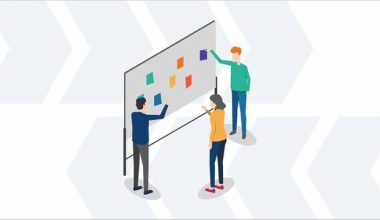
Software companies grow and reach different levels of maturity at different rates. Some are in growth mode, while some are in profit mode, but one thing that is constant across companies is the need to onboard their customers at scale.
Companies in growth mode, with up to 50 or 60 employees and roughly 100 to 150 customers, are most likely still able to provide ad-hoc, one-on-one training on site or use virtual training tools to train their customers. This phase is important, because it provides customer success teams with an opportunity to work with customers individually and develop an understanding of what it takes to keep them trained.
Things become more complicated when the numbers grow and one-on-one methods of training are no longer possible. In this second stage, where companies have over 65 employees and over 150 customers, they hit a natural maturity level where they must start scaling their customer onboarding and training delivery. While the customer success team is important in helping customers understand products and configurations, they no longer have the time to support the number of individuals who need constant help to use the products successfully.
Additionally, as the number of customers grow, turnover happens more frequently, so the people the company successfully trains may not be the same team members it’s working with six to eight months later. People are promoted or change jobs, leaving the customer success team in a state of constant onboarding.
While the customer success managers (CSMs) mean well, if there isn’t a defined or repeatable method of onboarding at this level of maturity, the customers will suffer from an inconsistent experience, and churn rates will rise. The ability to onboard customers at scale becomes critically important — which is where diversification of customer training delivery comes in.
Blended Learning to Deliver Customer Onboarding at Scale
Software companies at an early stage of maturity tend either to deliver one-on-one, in-person training or to leverage a knowledge base or community of some kind. They may use other technologies that are optimized for employee training. For the most part, however, onboarding customers at scale requires an online learning platform or other eLearning mechanism. Investing in online customer training will accelerate customers’ first time to value and free up the CSMs’ time for more strategic activities, such as business reviews and improving onboarding milestones and completion.
Introducing self-paced components for new customer onboarding, perhaps mixed with some face-to-face, virtual training and microlearning as well, can be a compelling mix for individuals with different learning styles to interact with on their own time. Diversifying customer training delivery enables companies to deliver more impactful learning opportunities that cultivate a higher rate of success.
Ongoing Customer Enablement and Product Engagement
Customer enablement and product engagement go hand in hand. Once a company has introduced itself to a customer in the onboarding process, the next step is engaging them with the product, increasing their understanding of the product and preparing for that first time to value moment. After that, it’s all about ongoing enablement, so that the customer can continue to be successful.
It’s not always the happy customers that renew. A company can have happy customers, but if their business doesn’t scale or grow, or their budgets are reduced, they can disappear. Successful customers are the ones for whom your product results in business value, quickly and continuously. Ultimately, the goals of customer training are based on software renewals, which is where product enablement comes in.
Moment-of-need Learning: Contextual versus Application
Taking software as an example, two different scenarios for learning include “in-software contextual learning” and “application learning.” Contextual learning may use a digital adoption tool, such as showing which button to press in order to complete an operation. These types of tools help customers use the software once they’re logged in. While important, they’re simply tactically or functionally helping the user complete a particular exercise. They don’t help learners apply a particular process or best practice using the software to improve outcomes.
For example, if customers are building a landing page using a marketing automation tool, the digital adoption or in-context tool will help them build a landing page, but it won’t help them build a landing page that will convert at a high level — their ultimate goal in using the software. Application learning will help customers build a great landing page so that they can gain more traffic and achieve better conversion rates and better outcomes.
Customer Training Platforms
Customers adopt software when the company selling it to them takes a learner-first approach: focusing on why a customer would want to use a feature of the software or product, or the use case and incorporating ways to apply it in a real-world scenario. If customers experience successes, they’ll be more engaged in the product, have better outcomes and then obtain more budget.
A software company’s customer training strategy should focus on those outcomes instead of just making sure that customers are using its products. It’s helpful to see people log in and log out and which parts of the software they’re engaging with, but the only true way to measure whether or not someone is adopting at scale is whether or not they’re experiencing success with the technology.
While customer training expands beyond customer onboarding in the full customer life cycle, businesses must offer a broad catalog of learning methods to keep their customers engaged in improving lifetime value. Customer success teams that incorporate training into their onboarding strategy, using a customer training platform, will help dynamically build, scale and deliver training and behavior change that lead to higher engagement, product proficiency and retention — not to mention avoid burnout and turnover within their own teams.







